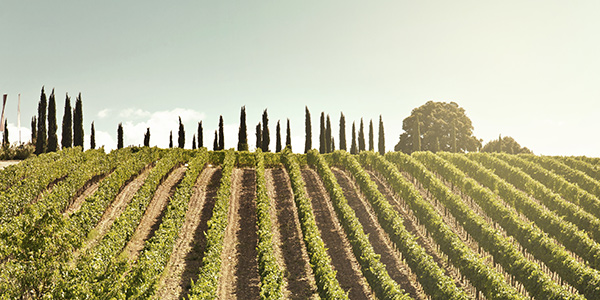 At Lea & Sandeman we like balance and rather unwittingly we appear to have struck a lovely equilibrium with our producers in Montalcino. By this I mean we have two in the North of the region and two in the South. This equitable arrangement allows us to cover the varying styles that the specific soils and micro-climates of these areas deliver. Even though it is only a 10-15 minute drive from one side to the other, they are significantly different.
At Lea & Sandeman we like balance and rather unwittingly we appear to have struck a lovely equilibrium with our producers in Montalcino. By this I mean we have two in the North of the region and two in the South. This equitable arrangement allows us to cover the varying styles that the specific soils and micro-climates of these areas deliver. Even though it is only a 10-15 minute drive from one side to the other, they are significantly different.
The North
Padelletti
The North based around the town of Montalcino is seen as the historic centre. This is where you find the wonderful estates of Fuligni and Padelletti, both with a history that entwines with that of the town itself. The Padellettis can trace their existence in Montalcino back to the 13th Century and were actually enlisted to help build the fortification of the town against the invading Spanish in 1529. Today they have a 6 hectare north facing vineyard called Rigaccini from which they produce just 7-8,000 bottles of refined, age-worthy Brunello. The soils locally are what’s known as Albarese, a mix of clay, limestone and sand, with differing amounts of galestro stones.
Fuligni
The North is basically cooler, due to having a slightly higher elevation and the Fuligni vineyards are tucked in on the left as you leave the town of Montalcino at about 400 metres. Used as a sanctuary from the ravages of malaria and TB in the early part of the 20th Century, it was the quality of the light and the pure air that led the Fuligni family to establish their first vineyards. Today the estate covers 20 hectares over 4 vineyards that face South-East and produce approximately 20,000 bottles of exquisite Brunello. The style of the wine is one of elegance and poise very much like the Fulignis themselves.
The South
Collemattoni
Heading South and just as you reach the turning to the town of Sant’Angelo in Colle, you arrive at the 7 hectare estate of Collemattoni. Marcello Bucci studied winemaking under Signora Fuligni, his style though is more in keeping with the southerly aspect, looking towards the imposing Monte Amiata, which exerts a strong influence over the climate here. Farming is organic and the soil has a greater concentration of clay. Marcello has built his own modern cellar (completed 2015) that allows him even greater control over the winemaking and the wines show greater precision as a result. Boldly aromatic and deeply fruited, these are often delicious to drink from the off, but still have the capacity to age gracefully for a decade or more.
Giodo
Finally it is just a short hop to an area known as Sesta and the relative newcomer Podere Giodo. Named after renowned Oenologist Carlo Ferrini’s parents Giovanna and Donatello this tiny 5 and a half hectare property is the realisation of a dream that Carlo has harboured for many years. The first vintage was 2009, but the project began back in 2002, the forensic detail that Carlo has brought to this project is impressive, selecting 15 of the best clones of Sangiovese, carefully planting the most suitable soils and building a bespoke cellar. This area has a history of producing muscular, powerful wines, but Carlo has sought to express a more elegant, detailed and pure expression in the wines that he makes. As a result they have garnered huge praise and have become ever more highly sought after with every new release.



